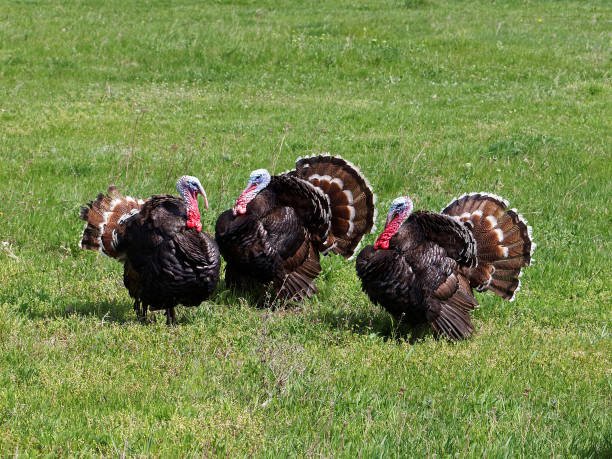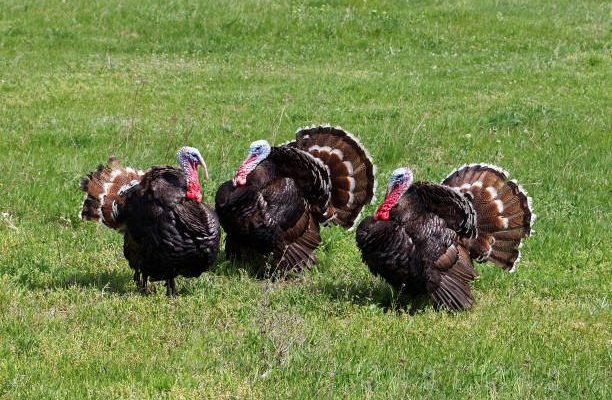
Understanding Turkey Social Dynamics
Before you introduce your new turkeys, it’s helpful to understand how turkeys behave in a group. They have social hierarchies, often referred to as a pecking order. This means that some turkeys will naturally dominate while others are submissive. If you throw newcomers into the mix without preparation, you might witness aggressive behaviors, leading to stress for all involved.
To help newcomers settle in, recognize the signs of stress in your turkeys. You might notice feathers ruffled, aggressive pecking, or even hiding. Establishing a calm and controlled environment can help ease these tensions. Just like people, turkeys need their personal space to feel secure—especially when they’re trying to find their place in the flock.
Here’s the thing: you don’t want your new turkeys to feel like they’re constantly being challenged. Gradual introductions can go a long way. By understanding their social dynamics, you’ll be able to create a more welcoming environment.
Pre-Introduction Preparations
Before you bring those new turkeys home, there are a few crucial preparations to consider. First, ensure that their living space is separate from your existing flock, at least initially. Setting up a quarantine area is a good practice that allows you to monitor the new birds for any health issues before they mix with your established flock.
Next up, create a safe and comfortable space. This area should have plenty of food, water, and shelter, so your new birds can feel at home. Think of it as a cozy hotel room before they venture out to meet the rest of the guests. You might want to include familiar bedding or items from the established flock to help the newcomers acclimate to their new environment.
Lastly, consider the timing of your introduction. Choose a period when your existing flock is calm, perhaps during the afternoon. If your established turkeys are in a relaxed mood, they’re more likely to accept new members without too much fuss.
Gradual Integration Process
Now, onto the fun part—integrating your new turkeys with the existing flock! Start by allowing the new turkeys to see the established ones without direct contact. You can do this by placing them in adjacent pens. This is like a friendly wave across the room before the big introduction. It allows both groups to get used to each other’s presence and sounds.
After a few days, if everything seems calm, it’s time for supervised introductions. Choose a time when your flock is relaxed, and let them interact under your watchful eye. Monitor their behavior closely. If you see any aggressive pecking or distress, don’t hesitate to separate them and try again later.
Remember, patience is key here. You might need to repeat this process several times before the new birds feel like part of the team. If you take it slow, you’ll help build a friendly atmosphere that encourages bonding.
Monitoring Behavior During Integration
As your turkeys begin to mingle, observing their behavior is vital. Keep an eye out for any signs of aggression or bullying from either side. Pecking or chasing can be normal, but if it becomes excessive, you might need to step in. Creating a balanced environment where all turkeys feel safe should be your ultimate goal.
Use treats to help facilitate bonding. Offering snacks to both the old and new turkeys simultaneously can create positive associations. It’s like having everyone share a pizza together; they’ll start to see each other as part of the same group.
Additionally, if you notice one turkey being particularly aggressive, it could help to temporarily remove them from the group. Allow them some time to cool off before trying to reintroduce them. It’s essential to manage stress levels during this transition as everyone settles into their new roles.
Providing Enough Resources for Everyone
One of the common reasons for conflict among turkeys is competition for resources. Ensure that you have enough food and water stations available. If there’s only one food dish, the dominant birds may hog it, leading to frustration for the newcomers.
Set up multiple feeding and watering stations around the yard. This way, everyone can access their needs without feeling threatened. Think of it like a buffet where no one has to wait in line—everyone can enjoy their meal without conflict.
You might also want to create hiding spots or areas where the new turkeys can retreat if they feel overwhelmed. This is important as it allows them to take a break and feel more secure, easing tension during the integration.
Establishing a Long-Term Flock Dynamic
After the initial introductions and adjustments, your newly integrated flock should begin to settle into a rhythm. However, keep in mind that the dynamics among turkeys can change over time. Just like any family, they may quarrel, but they also learn to live together and form bonds.
Continue to monitor their interactions over several weeks. Make adjustments as necessary, whether that means separating particularly aggressive individuals or adding more resources. The goal is to create a peaceful environment where all turkeys can thrive together.
Remember, the more positive interactions they have, the better their relationships will grow. Encourage social behaviors by engaging them in activities like foraging or space to roam freely. It’s in these moments that they can truly bond and build a cohesive flock.
Introducing new turkeys to your flock doesn’t need to be a stressful experience. With careful planning and a little patience, you can create an environment where all of your birds feel safe and welcomed. Remember, it’s all about gradual introductions, monitoring behavior, and providing ample resources.
By understanding turkey social dynamics and taking thoughtful steps, you can cultivate a happy and harmonious flock. In the end, happy turkeys make for a more enjoyable backyard experience, and you’ll feel proud knowing you’ve facilitated their blending. So grab a cup of coffee, relax, and enjoy watching your flock thrive together!

